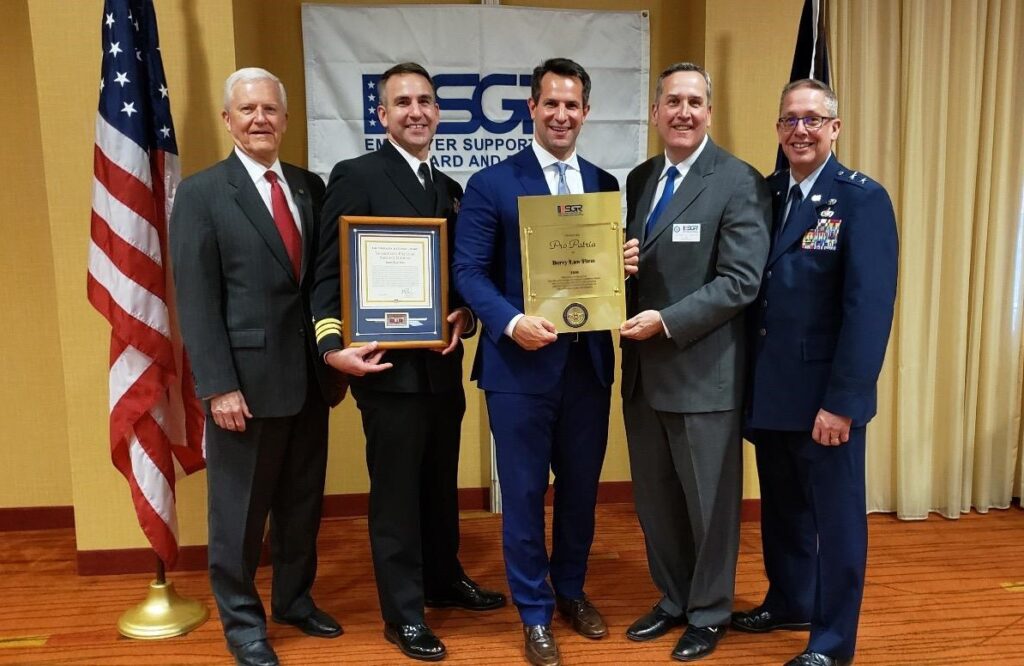
What if your disability benefits claim is connected to a gunshot or shrapnel wound? The Department of Veterans Affairs uses specific medical criteria to determine benefits for gunshot and shell fragment wounds. When applying for VA disability benefits for these injuries, detailed documentation of wartime injuries and proper application of the VA Rating Schedule are critical.
Some combat-wounded Veterans are later denied benefits because they can’t prove a service connection, and many others are deprived of thousands of dollars in VA disability benefits because of incorrect ratings.
Veterans may have additional disability claims for medical complications of gunshot or shrapnel injuries during military service. Furthermore, many Veterans who were injured by gunshots or shrapnel while on active duty suffer from post-traumatic stress disorder (PTSD). You need VA disability attorneys who know your rights.
Gunshot wounds are any wounds sustained as a direct result of gunfire. Gunshot wounds may be sustained from enemy combatants or fellow soldiers. (In these cases, they are referred to as “friendly fire” incidents.) Regardless, they can be very serious and even debilitating.
Gunshot wounds can lead to a wide range of illnesses, diseases, and long-term injuries and health problems, including but not limited to:
This type of injury must be treated quickly to save the person’s life. Even if a Veteran recovers, a gunshot wound could leave them permanently disabled. In these cases, the Veteran may qualify for disability benefits and compensation from the VA.
Shrapnel wounds are injuries from flying debris during explosions, like from grenades or bombs. These wounds can range from cuts and scrapes to more serious injuries like broken bones or internal injuries. Sometimes, you might not even see the damage right away because it can be hidden under your skin.
Treating shrapnel wounds usually involves cleaning the wound, stitching up any cuts, and doing a thorough medical examination for other injuries that may not be readily visible. Sometimes, surgery is needed to repair the damage.
Shrapnel injuries also can cause mental anguish and trauma. Getting hit by shrapnel can be pretty scary, and it’s normal to feel shaken afterward. It’s essential to take care of both your body and your mind while you recover. You’re not alone in this, and there’s help out there if you need it.
Combat injuries from shrapnel can occur in various situations and may result from different sources. Here are some common sources of combat injuries related to shrapnel:
The VA uses similar criteria to evaluate both gunshot wounds and shrapnel wounds when determining disability ratings. However, there might be some differences in the evaluation process based on each type of injury’s specific effects and characteristics.
In most cases, gunshot and shell fragment wound effects are evaluated using the VA Schedule of Ratings for Muscle Injuries. These ratings take a variety of symptoms and conditions into account, such as fatigue, pain levels, weaknesses, loss of muscle tone or substance, limited movement or disability, amputation possibility, and impaired coordination.
The severity of disability ratings for both types of injuries depends on the extent of complications and the long-term effects. For instance, if a gunshot or shrapnel wound results in severe impairment, it may lead to a higher disability rating.
When a Veteran seeks compensation or disability benefits for a gunshot wound, they must sit for a Compensation and Pension (C&P) Exam. During this exam, the Veteran’s injuries will be classified from slight to severe:
You may receive a disability rating depending on how severe your wound is and, more importantly, the severity of the long-term effects. Your VA disability compensation rate will affect the amount of money you receive.
For example, if you suffer a gunshot wound with minimal scarring and no functional impairment, you may receive a low disability rating of 10%. If your gunshot wound causes you to lose part of the motion in your arm or leg, you may receive a much higher disability rating of 40% or more, leading to higher VA disability compensation.
Both types of wounds require establishing a service connection, demonstrating that the injuries occurred during military service. This is a crucial aspect of the VA disability claims process.
While the evaluation process shares similarities, it’s essential to recognize the unique characteristics of each case. Veterans should provide detailed documentation, including medical records and evidence of the impact on their daily lives, to support their claims.
Yes. However, the wound must be completely disabling or debilitating to some extent. For example, if you suffer a gunshot wound to the back that prevents you from using your lower legs, you will receive a 100 percent disability rating from the VA.
But that’s because you can no longer move your legs, not necessarily because the injury occurred due to a gunshot. Instead, your wounds and conditions/disabilities will be rated according to their effects on your life.
Veterans who have experienced combat injuries from gunshots or shrapnel may also be eligible to claim benefits for secondary conditions that arise because of the initial injuries. Here are examples of two common secondary conditions:
Gunshot and shrapnel wounds sustained in combat situations can lead to significant mental health challenges such as post-traumatic stress disorder (PTSD). Veterans may experience psychological distress, anxiety, depression, or other mental health conditions because of their injuries.
To claim benefits for mental health issues, Veterans need to establish a clear link between their wounds and their subsequent mental health condition. This may involve providing medical evidence, such as psychiatric evaluations or treatment records, to demonstrate the service connection.
Gunshot wounds and shrapnel injuries can cause long-lasting physical effects, including chronic pain. Veterans may suffer from persistent pain in the affected areas, affecting their daily lives and overall well-being.
When claiming benefits for chronic pain, Veterans should document the ongoing nature of the pain, its impact on daily activities, and any medical treatments received. This documentation helps establish the connection between the original wound and the subsequent chronic pain condition.
Veterans need to work with experienced professionals, like Berry Law, who understand the complexities of VA disability claims. Legal representation can assist in gathering necessary documentation, presenting a strong case for service connection, and navigating the complexities of the benefits claims process.

In World War II and the Korean War, combat injuries were typically treated near the front lines. The nature and extent of gunshot wounds were well documented by commanders and physicians in the field, resulting in a clear service connection and proper gunshot wound rating.
This dynamic changed in the Vietnam War, when wounded fighters were more likely to be evacuated to medical centers far from the combat zone, and often flown stateside for advanced medical care and recuperation. Unfortunately, the paperwork did not always catch up with Veterans who suffered gunshot or shrapnel wounds. Without detailed medical records, their later VA claims were denied, or Veterans benefits were paid at a lower VA rating.
Attorneys John S. Berry Sr. (Vietnam) and John S. Berry (Bosnia, Iraq) are combat Veterans. They have a unique understanding of VA disability claims in the context of modern warfare, triage of combat injuries, and the military chain of command. Many of our case managers and VA attorneys are also veterans.
Our disability lawyers have represented Veterans of WWII, Korea, and Vietnam, as well as more recent conflicts, namely Operation Desert Storm, Operation Iraqi Freedom, and Operation Enduring Freedom.
These cases create challenges because of the time lag and missing records. The VA Rating Schedule may not reflect the unique medical issues associated with improvised explosive devices (IEDs) or armor-piercing rounds with the latter.
Our mission is to ensure that clients receive a maximum rating and corresponding benefits for their service-connected wounds from gunshots and metal fragments. Our lawyers will work to corroborate the service connection or the extent of the injury for a gunshot-related VA disability claim. We are a law firm that represents Veterans throughout the United States.
At Berry Law, we’re more than a law firm; we’re a team of Veterans who understand the challenges you face. We believe Veterans deserve every benefit owed to them. Our lawyers are experienced in handling claims involving gunshot wounds, shrapnel injuries, and other combat injuries.
We help you navigate the complexities of disability claims, ensure you meet all requirements to qualify for disability benefits, gather essential evidence for your case, and advocate for the maximum benefits you have earned.
Our team is ready to stand by your side, just as you’ve stood for our country. Call our legal team at 888-883-2483 or fill out our online contact form. We represent Veterans in all 50 states and our legal team is available to you 24/7. Your fight is our fight. Let’s secure the benefits you deserve together.
Our monthly newsletter features about important and up-to-date veterans' law news, keeping you informed about the changes that matter.